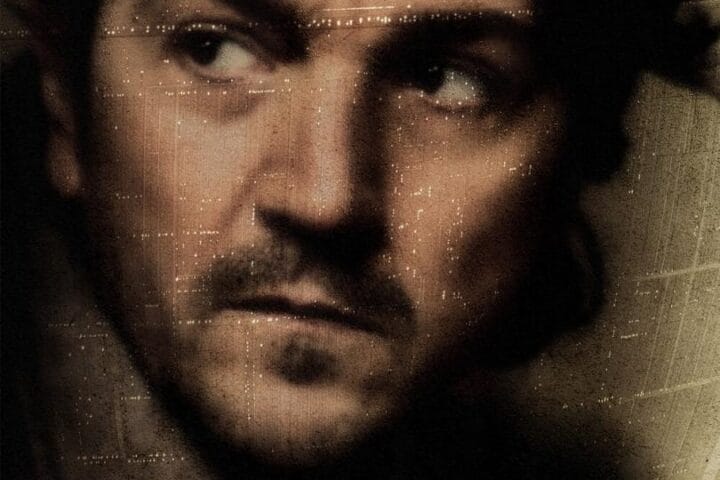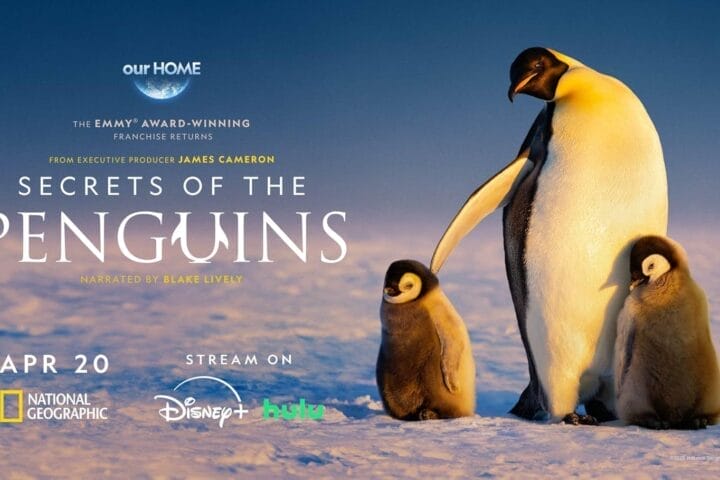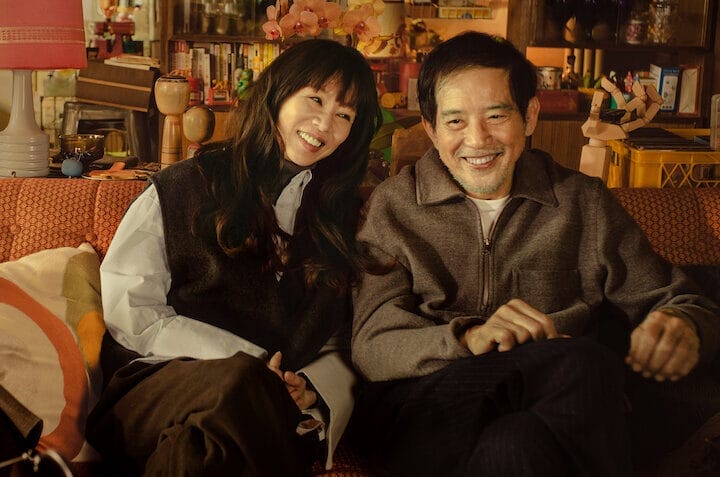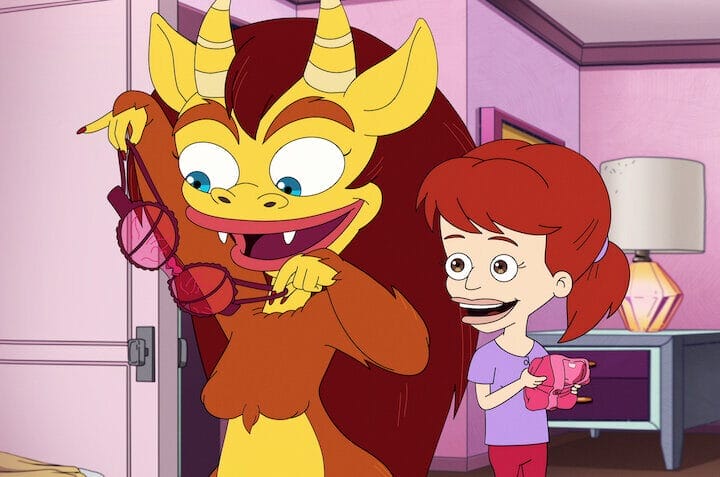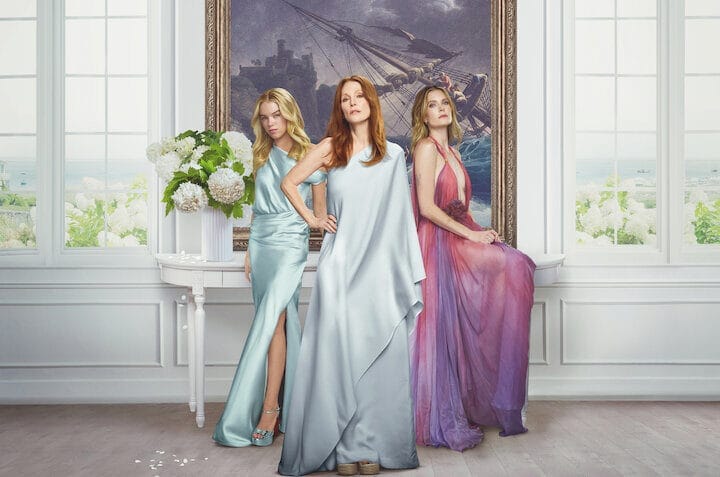“Mid-Century Modern” introduces us to three gay friends living in Palm Springs. The question inevitably arises: is this some kind of updated version of “The Golden Girls” (1985-1992), that beloved sitcom from years past? We’ll see.
The latest comedy series from Hulu and Disney+, “Mid-Century Modern,” has quickly garnered attention for its blend of familiar sitcom charm and a distinctly contemporary perspective. From “Will & Grace” creators Max Mutchnick and David Kohan, this ten-episode series introduces audiences to a trio of unforgettable characters navigating life, love, and aging in the vibrant setting of Palm Springs, California.
The Plot
“Mid-Century Modern” centers on Bunny Schneiderman (Nathan Lane), Jerry Frank (Matt Bomer), and Arthur Broussard (Nathan Lee Graham), three gay best friends who find themselves living together after the passing of a mutual friend. Bunny, a successful lingerie entrepreneur, resides in a stylish mid-century modern home with his headstrong mother, Sybil Schneiderman (Linda Lavin). Jerry, a kind-hearted former Mormon, works as a flight attendant. Arthur, bringing sophisticated flair from his past as a Vogue editor, is adjusting to life in Palm Springs and the challenges of finding new professional footing.
The series kicks off with Bunny’s generous invitation for Jerry and Arthur to move into his home. As they embark on this new chapter, viewers are treated to a comedic and touching exploration of their intertwined lives. Storylines hint at Bunny’s search for romance, Arthur’s often humorous experiences in the local job market, and glimpses into Jerry’s past, including a strained relationship with his daughter. Central to the show is the unwavering support and camaraderie the three friends find in their chosen family as they navigate the complexities of their later years. The series also addresses the absence of Linda Lavin’s character, Sybil, following the beloved actress’s real-life passing during production.
The Cast
The success of “Mid-Century Modern” is significantly bolstered by its stellar cast. Nathan Lane plays Bunny with his signature comedic brilliance, while Matt Bomer showcases his versatility in a charmingly comedic role as Jerry. Nathan Lee Graham brings delightful elegance and sharp wit to the character of Arthur. In her final television appearance, Linda Lavin infuses Sybil with her characteristic warmth and comedic timing. The talented ensemble includes Pamela Adlon as Bunny’s sister Mindy, Richard Kind as Carol Mintz, Zane Phillips as Mason, and Billie Lourd as Jerry’s daughter Becca.
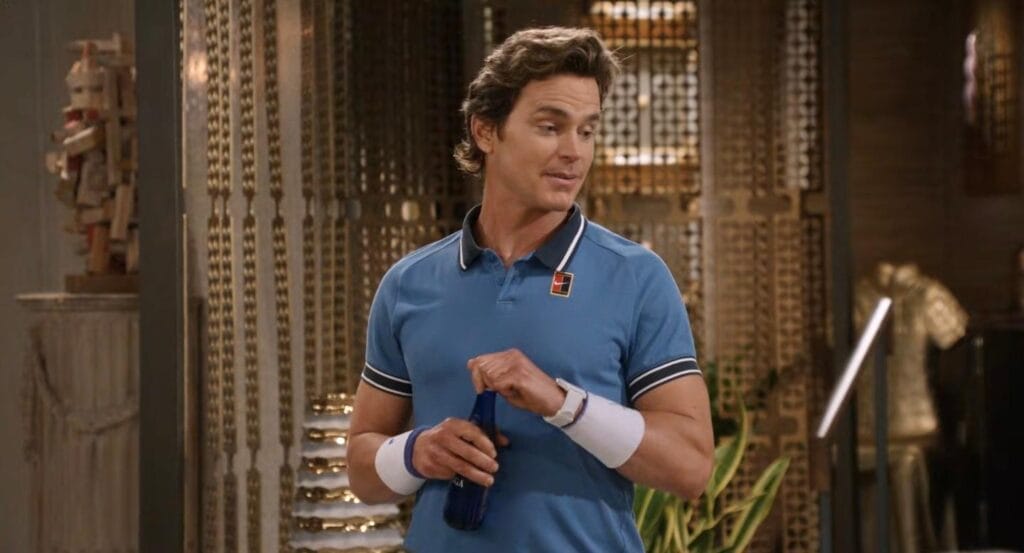
Behind the Camera
The series boasts an A-list team. Creators, writers, and executive producers Max Mutchnick and David Kohan bring their extensive sitcom expertise to the project. They are joined by executive producers Ryan Murphy and veteran director James Burrows, who directs the series and whose legendary career includes iconic shows like “Cheers” and “Friends.” Nathan Lane and Matt Bomer also serve as executive producers. The show further features an impressive roster of guest stars, including Jesse Tyler Ferguson, Vanessa Bayer, Kim Coles, Judd Hirsch, Rhea Perlman, and Cheri Oteri.
The Style of “Mid-Century Modern”
“Mid-Century Modern” adopts a traditional multi-camera sitcom style, complete with a live studio audience, contributing to its comforting and familiar feel. However, the themes explored within this framework provide contemporary resonance. The series delves into the experiences of aging, particularly within the LGBTQ+ community, highlighting both the challenges and joys unique to this stage of life. At its heart, the show celebrates the profound bonds of chosen family, emphasizing the strength and support found in deep friendships. The complexities of love and relationships in later life are also a major theme, with each character navigating their own romantic journey. The show also touches upon themes of grief and loss, given the circumstances that bring the friends together and the subsequent passing of Sybil. Jerry’s background as a former Mormon allows for explorations of religious identity and acceptance. Ultimately, “Mid-Century Modern” delivers a tone that is often campy, consistently witty, and frequently sentimental, while remaining unapologetically queer in its depiction of LGBTQ+ lives.
While the title directly references the “Mid-Century Modern” aesthetic, the show’s connection to this era primarily comes through its setting in Palm Springs, a city celebrated for its iconic mid-century modern architecture. The set design and costuming offer subtle nods to this style. Although the series is set in the present day, potential thematic links exist to the social and cultural context of the mid-20th century, particularly concerning evolving social norms and identities. Interestingly, the production design incorporates other desert styles beyond mid-century modern, adding visual richness to the show’s aesthetic.
The writing by Max Mutchnick and David Kohan brings their signature blend of sharp wit and emotional depth, a style proven successful during their tenure on “Will & Grace.” Direction by sitcom veteran James Burrows ensures smooth pacing and effective comedic delivery. The performances by the lead actors have been widely praised, with Nathan Lane delivering his expected comedic mastery and Matt Bomer surprising audiences with his comedic timing. Nathan Lee Graham has been noted for his scene-stealing moments. A particularly poignant aspect of the production was how the series handled the passing of Linda Lavin, with a dedicated episode serving as a heartfelt tribute.
Comparing Two Sitcoms
Comparisons to “The Golden Girls” have been a recurring point of discussion. While both shows feature a group of adults over fifty sharing a home and a comedic approach to life and friendship, “Mid-Century Modern” distinguishes itself with its focus on an all-male, explicitly queer central cast. The creators and actors have acknowledged these similarities, with co-creator Max Mutchnick noting that the “Gay Golden Girls” comparison is a helpful shorthand for the show’s concept. However, they also emphasize that “Mid-Century Modern” aims to be its own unique entity, exploring contemporary themes and humor relevant to today’s audiences. Nathan Lane has also commented on this, stating the goal wasn’t simply to replicate “The Golden Girls” but to honor multi-camera sitcom traditions while offering something fresh. A key difference lies in the show’s willingness to explore more explicit LGBTQ+ content with a candor not typically seen on network television during “The Golden Girls” era.
“Mid-Century Modern” offers a delightful blend of classic sitcom elements and modern perspectives. With a talented cast and experienced creators, the series delivers laughs and genuine emotion as it delves into the lives of three gay friends navigating their golden years in Palm Springs.
All ten episodes of “Mid-Century Modern” premiered on March 28, 2025.
Where to Watch “Mid-Century Modern” (Depending on your location)


